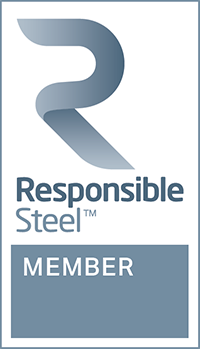Sustainable transport solutions:
Steel marking the way
The efficient mobility of people and goods is vital for our modern, globalised economy. However, an issue that has raised mounting concerns is the dwindling capacity of our planet’s resources and environment to accommodate the current growth rate of the economy and population. Today, there is a pertinent fear that at some point, global warming, climate change, and exhaustion of non-renewable energy resources will reach a point of no return.
Under such conditions, it has become critical to create sustainable mobility solutions, that is, transport systems that are not just efficient, but environment friendly as well, to support future social and economic development. Sustainable mobility solutions predicate a transportation framework that is enabled to support a society’s mobility needs without causing harm to the environment or the mobility needs of future generations.
Vehicles are the first point of the transport supply where sustainable improvements can be implemented effectively. It can be done by rethinking the energy intensity of operative vehicles and the carbon intensity of the fuels they run on. To this end, there are many strategies, such as the use of lighter materials in the manufacturing of vehicles, more efficient engine technologies, and fuel alternatives.
In this scheme of things, steel is well-suited to create sustainable transport solutions. It is revolutionising our mobility and the transport of goods, providing strong, durable, sustainable and safe transport solutions, and enhancing safety in case of collision. Furthermore, it is lightweight, UV-resistant, affordable, and 100% recyclable.
Around 17% of the steel produced worldwide is used in mass transport today, whether in the form of bicycles, motorbikes, buses, cars, trains, ships or planes. Innovations in the design and development of new high-strength steels have also played a key role in improving the efficiency of many of these transport modes while reducing greenhouse gas (GHG) emissions considerably.

Steel is also indispensable to the requisite-related transport infrastructures such as roads, bridges, ports, stations, airports and fuelling for efficient transportation. Salient applications of steel in transport include ships and shipping containers, trains, aeroplanes, and metro coaches. It is worth knowing how steel and its applications in these various modes of modern transport is making the future of transport more environment-friendly and sustainable.
Steel ships carry 90% of global freight. An estimated 17 million containers worldwide are made of steel. Modern steel plates in shipbuilding have much higher tensile strengths than their precursors, which makes them much better suited for efficient construction of large container ships. The steel plates now available are designed to be resistant to corrosion, which is ideal for building oil tankers. Such steel makes much lighter vessels than before, or larger capacity vessels of same weight, creating significant opportunities to save on fuel consumption and greenhouse gas emissions.
Global sustainability requires transport solutions that are energy efficient and have minimal role in climate change even while taking people and goods efficiently where they want to be, when they want to be there. It is largely accepted now that inter-modal and urban rail transport will form a vital part of the future of sustainable transport infrastructure. Freight movement has almost doubled in the last few decades.
Rail transport (especially electrified trains) is intrinsically lower carbon-emitting and less polluting than other forms of mass transport. In short or medium distance journeys, rail transport reduces travel times and carbon dioxide emissions per passenger kilometer much more than almost all other forms of transport.
Therefore, we need reliable and sustainable rail transport systems with low installation and operating costs. We need steel in the trains, for the rails and infrastructure. The main steel components of trains are coaches, including wheels, axles, bearings and motors. Freight wagons are almost entirely made of steel.
For aeroplanes, steel is required for the engines and landing gear. The benefits of using steel in air transport and other transport applications are that it is strong, safe, durable, cost-efficient, and endlessly recyclable. At JSW Steel, the prime motivation is to improve the sustainability of the modern transport framework. The aim is to contribute to making it possible through cutting-edge steel products that can curb the operational cost and improve the carbon footprint for a greener future.
Information sources: World Steel,Transport Geography




